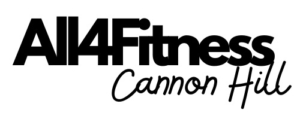Posture and it’s role in wellbeing
Posture is a key indicator when considering the health status of individuals and has two key fundamentals: Static posture, the ability to maintain optimal body & joint position over sustained periods, and Dynamic posture, the ability to maintain joint mobility and function whilst moving or heavy lifting in different planes of motion.
Understanding key muscle systems
Among the myriad of systems that make up the human body, your muscles have a huge influence on postural conditioning. It is important for any fitness enthusiast, personal trainer or athlete to have a basic understanding on the role your muscles play and how muscle balance affects your posture.
Tonic or “Stabiliser” muscles are deep and closest to the joints. These muscles are small and are responsible for keeping your joints in line and functioning properly. Your spine is supported by dozens of tiny muscles that hold it together and keep it functioning optimally.
Phasic or “Movement” muscles are your larger muscles responsible for quick, explosive movements and heavy lifting. An example of phasic muscles would be your “Lats” (Latissimus Dorsi), muscles on your back which give you the much sought after V shape.
Balance is absolutely vital between these two muscle systems. With modern day training methods and high intensity classes that tend to be phasic-dominant, it is all too common to see the conditioning and coordination of the tonic system get left behind. This is where degeneration, injury and poor posture come into play. On the other side of the coin, neglect and stressful lifestyles can also contribute to poor posture.
Identifying Postural issues
Here’s a picture of one of my clients presenting current postural faults. Picture 1 shows her on her first assessment. The second picture was taken about 30mins later after some adjustments. Not perfect but I swear she must’ve gained two inches in height!
I come across a range of common postural faults among a range of different clients. Although there are differing reasons for their condition, common symptoms are excessive forward head posture, rounded upper back and forward shoulders. The lower back, hips, knees and ankles also show symptoms which overload the joints.
Postural overloads in joints restrict blood flow to those areas where pathologies such as trigger points, fibrous tissue and other issues occur which can contribute to chronic pain.
Posture in the workplace
Sitting at a desk all day that often is not setup properly can cause all sorts of problems. Slouching in your chair, rounded shoulders and excessive forward head are common problems amongst office workers seated for long periods and get worse as the day wears on.
I often recommend that my clients replace their work chair with a swiss ball. Using a swiss ball at work trains your postural muscles constantly through the day*, it is a great investment and best of all, you cannot fall asleep on a swiss ball unless you want to end up on the floor!
*If you have never used a swiss ball as a chair before, it is advisable to only use it intermittently throughout the day until your body gets used to the new position.
A pretty extreme way to promote good posture!
Exercising with poor posture
Your posture tells the truth about the balance of your exercise program. If you are new to exercise, many problems can be avoided down the track by building a solid postural foundation. If you have been training for a while but have not been conditioning your postural systems, it’s not too late to do so.
I like to use the analogy of the wheel on a car. When changing your wheel it is vital that the bolts are tight so the wheel can maintain a balanced axis of rotation during driving. The same goes for your body. Optimal posture will ensure your joints can maintain their position, operate within a safe, functional axis of rotation, and prevent injuries all the while making those gains you’ve been working so hard to attain.
Swiss Balls when used properly are an excellent tool to condition your tonic system and get rid of any niggles that may be causing you discomfort or pain.
An excellent way to wreck your back! A common site in many gyms
Postural conditioning as a foundation for strength and movement
I recommend everyone give attention to their postural systems when embarking on an exercise program. The carryover to everyday tasks will have a great impact on your performance if you were a mother constantly picking things up and putting things down, office workers required to maintain positions for extended periods of time, dentists and beauty specialists bent over in sustained positions, athletes, and the list goes on. Building a foundation is key so you can build strength and optimise your movement.
When your body is in optimal alignment it uses less energy which in turn means you are operating more efficiently and will keep you happy!
Written by:
Jaime-Lee Templeton
Exercise Specialist – Corrective Exercise, High Performance, Golf Biomechanics
wellnessdotlife.com
